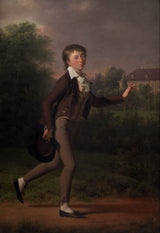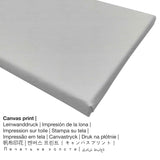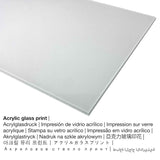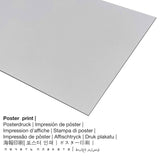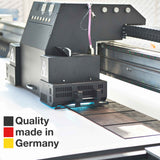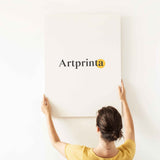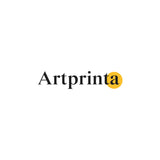Jens Juel, 1802 - Nwa nwoke na-agba ọsọ. Marcus Holst nke Schmidten - mbipụta nka mara mma
Ụtụ gụnyere. Mbupu gbakọrọ na ndenye ọpụpụ.
Artwork description as provided from Statens Museum for Kunst (National Gallery of Denmark) (© - Statens Museum for Kunst (National Gallery of Denmark) - www.smk.dk)
Here, Juel chose to depict a young nobleman dashing off to school. The school in question was Christianis Institut, which focused greatly on movement and exercise and built Denmark’s first playground.
The young nobleman, Marcus Pauli Holst von Schmidten, is seen running on his way to school; his school is glimpsed in the background. The boy’s figure is simultaneously in movement and in balance. It is one of few examples of a figure in movement in Juel’s mature work. Like several other of Juel’s late works, this painting has a certain classical feel. It has prompted comparisons to the portraits created by his contemporary, the French artist Jacques Louis David, but there is no evidence proving that Juel had direct knowledge of David. It is, however, possible that Juel was introduced to English portraits through his friend, the engraver J. F. Clemens, who stayed in London 1792-95. An engraving after the American painter Gilbert Stuart's The Skater (Washington, National Gallery of Art) may have served as inspiration for this painting. The landscape does not surround the boy; it exclusively serves to form the background, thereby helping to give the painting a relief-like feel. Juel’s decision to show the boy in movement is very deliberate; the boy attended the Christianis Institut school, which lay outside of the Copenhagen of the day (where the Vesterbro neighbourhood is today). The school did pioneering work to give children the opportunity to play and do athletics in the open air. The school’s playground was the first to be built in Denmark.
Nkọwa ihe nka
| Aha nka: | "A Running Boy. Marcus Holst of Schmidten" |
| Nhazi nka: | sere |
| Otu izugbe: | nkà nke oge a |
| Time: | 19th narị afọ |
| Emepụtara na: | 1802 |
| Ogologo afọ nka nka: | 210 afọ |
| Egosiputara na: | Statens Museum maka Kunst (National Gallery nke Denmark) |
| Ebe ebe ngosi nka: | Copenhagen, Denmark |
| Weebụsaịtị nke ihe ngosi nka: | www.smk.dk |
| Ikikere nke ihe osise: | ngalaba ọha |
| Site n'aka: | National Gallery nke Denmark |
Tebụl onye na-ese ihe
| Aha onye nka: | Jens Juel |
| Aha nka ndị ọzọ: | Prof. Juel, Juel Jens Jørgensen, Juel J., Jens Juel, Jens Juul, Professor Juul, Jens Jvel, J. Juel, Jens Juel Königl. Dän. Portraitmahler und Prof. der Mahler=Academie zu Copenhagen, Professor Juel, Juel, Juel Jens Jorgensen, Jens Jul, J. Jul, J. Jvel, Juul, Jens Jorgensen Juel, Juel Jens |
| Gender: | nwoke |
| Nationality: | Danish |
| Ọrụ: | onye na-ese ihe |
| Obodo obibi: | Denmark |
| Nkewa onye nka: | omenkà nke oge a |
| Oge ndu: | 57 afọ |
| Afọ amụrụ: | 1745 |
| Nwụrụ n'afọ: | 1802 |
| Nwuru na (ebe): | Copenhagen, Hovedstaden, Denmark |
Nkọwa ngwaahịa
| Nkewa ngwaahịa: | mmepụta nka |
| Usoro mmeghari: | dijitalụ mmeputakwa |
| Usoro mmepụta: | mbipụta dijitalụ (Mbipụta UV ozugbo) |
| Mmalite nke ngwaahịa a: | German mere |
| Ụdị ngwaahịa: | mmepụta ihe na-achọ |
| Ojiji ngwaahịa: | mgbidi mgbidi, ụlọ mmepụta nka nka |
| Nhazi: | nhazi ihe osise |
| Njikwa oyiyi: | ogologo ruo obosara 2: 3 |
| Pụtara nha akụkụ: | ogologo bụ 33% mkpụmkpụ karịa obosara |
| Ngwa ngwaahịa dị: | Mbipụta iko acrylic (nwere ezigbo mkpuchi iko), mbipụta ọla (aluminium dibond), mbipụta akwa akwa, mbipụta akwụkwọ mmado (akwụkwọ kwaaji) |
| Nhọrọ nke Canvas Mbipụta (akwa akwa na etiti ihe ndọtị): | 20x30cm - 8x12", 40x60cm - 16x24", 60x90cm - 24x35", 80x120cm - 31x47", 100x150cm - 39x59" |
| Mpempe iko acrylic (nwere ezigbo mkpuchi iko) nha dị iche iche: | 20x30cm - 8x12", 40x60cm - 16x24", 60x90cm - 24x35", 80x120cm - 31x47", 100x150cm - 39x59" |
| Nhọrọ nha nke akwụkwọ mmado (akwụkwọ kwaaji): | 40x60cm - 16x24", 60x90cm - 24x35", 80x120cm - 31x47" |
| Mbipụta aluminom (aluminium dibond ihe) nha dị iche iche: | 20x30cm - 8x12", 40x60cm - 16x24", 60x90cm - 24x35", 80x120cm - 31x47" |
| Nhazi nke nka nka: | agunyeghi |
Ngwa ihe anyị na-enye:
Nchịkọta nhọrọ ngwaahịa na-enye gị ohere ịhọrọ akụrụngwa na nha masịrị gị. Ị nwere ike ịhọrọ nha na ihe kachasị amasị gị n'ime nhọrọ ndị a:
- Glass acrylic ebipụtara nwere mmetụta na-egbuke egbuke (ya na mkpuchi iko n'ezie): An print on acrylic glass, which is often referenced as a print on plexiglass, changes your favorite original work of art into beautiful home décor. Moreover, the acrylic glass fine art print offers a viable alternative to aluminium or canvas prints. Your favorite work of art is being printed with the help of state-of-the-art UV print machines. The special effect of this are impressive and rich color tones. Our plexiglass with real glass coating protects your custom fine art print against light and heat for many years.
- Mbipụta nke aluminom: These are metal prints on aluminium dibond material with an impressive depth effect - for a modern impression and non-reflective surface. A direct Aluminium Dibond Print is the best start to fine replicas with aluminum. The bright & white parts of the artwork shine with a silk gloss, however without the glare.
- Mbipụta kwaaji: A UV printed canvas material stretched on a wood frame. A canvas of this artpiece will provide you with the chance of turning your personal into a large size artwork. How do I hang a canvas print on my wall? The advantage of canvas prints is that they are relatively low in weight, meaning that it is easy and straightforward to hang up your Canvas print without extra wall-mounts. Canvas prints are suited for any kind of wall.
- Akwụkwọ mmado ebipụtara (akwa akwa akwa): Our poster is a printed flat canvas paper with a slightly rough structure on the surface, that resembles the actual version of the artwork. Please keep in mind, that depending on the absolute size of the canvas poster print we add a white margin between 2-6cm around the print motif, which facilitates the framing with a custom frame.
A Running Boy. Marcus Holst of Schmidten is an artpiece made by Jens Juel. This piece of art is part of the Statens Museum for Kunst (National Gallery of Denmark)'s digital collection, which is the largest museum of fine arts in Denmark and is attached to the Danish Ministry of Culture.. With courtesy of - National Gallery nke Denmark (ọha na eze).: . Further, the alignment is portrait with an aspect ratio of 2: 3, nke pụtara na ogologo 33% dị mkpụmkpụ karịa obosara.
Nkwupụta iwu: We try to describe the art products with as many details as we can and to demonstrate them visually. Still, the colors of the printed materials and the printing can vary to a certain extent from the representation on the monitor. Depending on the screen settings and the condition of the surface, not all color pigments are printed 100% realistically. In view of the fact that our art reproductions are processed and printed by hand, there might also be minor variations in the size and exact position of the motif.
Enwere ikike nwebiisinka © - Artprinta.com (Artprinta)

